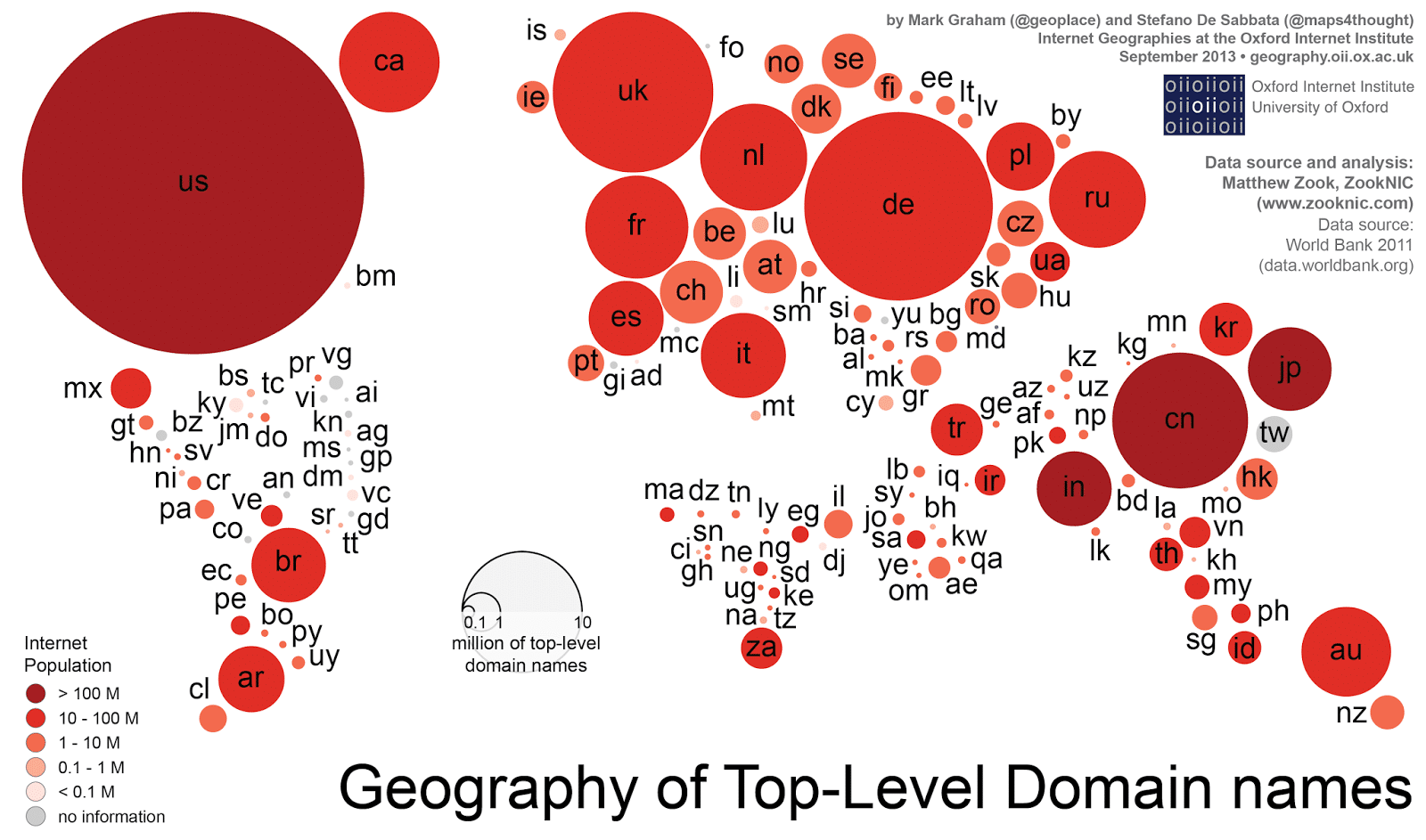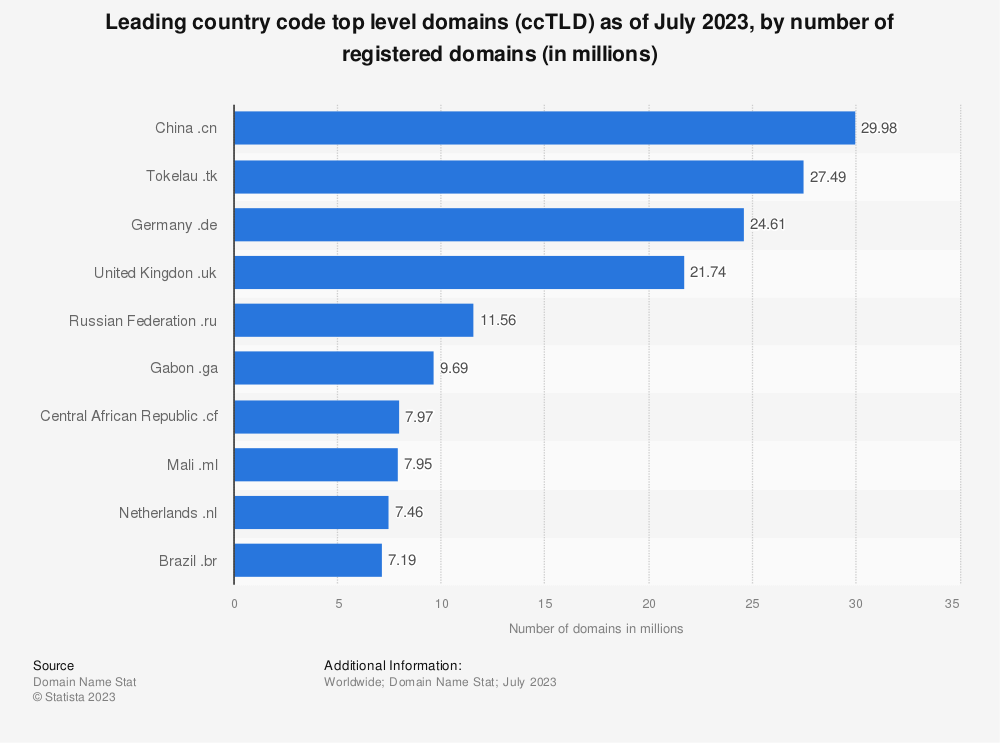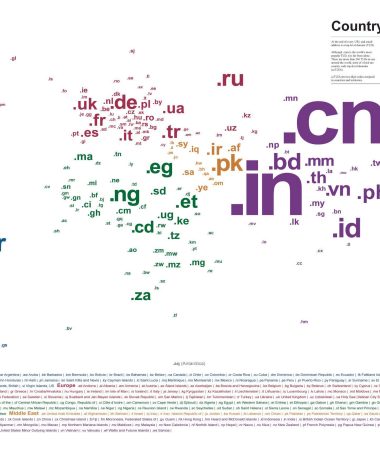Geographic domains, often referred to as country code top-level domains (ccTLDs), are an essential component of the internet’s addressing system that identifies a website’s geographical association. Unlike generic top-level domains (gTLDs) such as .com, .net, or .org, geographic domains are specific to countries and territories.
For instance, .uk corresponds to the United Kingdom, .au is for Australia, and .de is for Germany. But the significance of these geographic domains isn’t merely nominal; they play a critical role in localizing web content, bolstering national identities, and optimizing local search engine performance. This article aims to offer an in-depth understanding of what geographic domains are, how they work, and why they matter in today’s digital age.
What Exactly Are Geographic Domains?
At its most basic level, a geographic domain is a part of a website’s URL that signifies its country of origin or targeted region. Formally known as a country code top-level domain (ccTLD), this domain extension is usually two letters long and corresponds to a specific country’s ISO 3166-1 alpha-2 code. For example, the ccTLD .fr signifies France, while .jp stands for Japan.
How Do They Work?
Whenever you type a URL into your web browser, the Domain Name System (DNS) translates that human-friendly address into an IP address that machines understand. This translation process also takes the geographic domain into account. For example, a search query in Google with a .fr extension will prioritize French content, and a visitor from Japan may find sites with a .jp extension at the top of their search results.
Importance of Geographic Domains
Localization
One of the most significant advantages of using a geographic domain is localization. Companies and organizations that target a specific national audience often opt for a geographic domain to ensure their content is locally relevant.
SEO Benefits
Local search engine optimization (SEO) is another area where geographic domains can have a huge impact. When a person within a specific country searches for something online, search engines often prioritize results from that country’s specific ccTLD.
National Identity
For countries with a strong sense of national identity, having a geographic domain that corresponds to their nation can be an element of pride. Some countries, like Tuvalu (.tv), have even monetized their ccTLDs by leasing them to foreign organizations who find the domain extension catchy or relevant for their business.
Regulatory Aspects
It’s essential to note that owning a geographic domain often requires adherence to certain regulations set forth by the corresponding country. These rules may range from residency requirements to restrictions on the kind of content that can be published.
Drawbacks and Considerations
While there are numerous advantages to geographic domains, there are some drawbacks as well. The localized nature means that the website may not rank as well globally. Moreover, the regulatory requirements can sometimes be cumbersome, and failure to comply could result in the loss of the domain name.
Geographic domains serve as more than just a country-specific badge on a website’s address; they are integral tools for localization, SEO, and even national identity. However, their use comes with its own set of regulations and limitations.
Understanding these facets can help businesses and individuals make an informed decision about whether to opt for a geographic domain. The landscape of digital identity is continually evolving, and geographic domains remain a critical part of this ecosystem.
Expanding the Horizon: The Future of Geographic Domains
As technology continues to evolve, geographic domains are also undergoing transformations that could potentially reshape the way they are perceived and used. With advancements in machine learning, AI, and localized search algorithms, the traditional advantages of ccTLDs may be amplified or even redefined. Here are some trends that could shape the future of geographic domains:
Integration with Local Services
As smart cities become a reality, geographic domains may serve as a vital touchpoint for accessing localized services. Governments might use ccTLDs to create more intuitive, user-friendly portals for public services, effectively turning these domains into gateways for citizens to interact with various local resources.
Cybersecurity Measures
Given the rise in cyber threats, many countries are now considering more stringent regulations on who can own and operate a ccTLD. Geographic domains could become a pivotal part of a nation’s cybersecurity framework, demanding more rigorous background checks and operational protocols for domain owners.
Geo-Political Implications
In an increasingly interconnected world, the geopolitical implications of owning a geographic domain could become more significant. Countries might opt to exert greater control over their respective ccTLDs to safeguard their digital sovereignty or to comply with international sanctions and treaties.
Globalization vs. Localization
The dichotomy of globalization and localization will continue to impact the use of geographic domains. Businesses looking to expand globally may opt for a gTLD, but a ccTLD will remain essential for companies that aim to maintain a strong local presence.
Technological Challenges
The continued rollout of IPv6 and the introduction of new domain extensions could alter the landscape in unpredictable ways. The technical aspects of domain management are likely to become more complex, requiring domain owners to keep up with the latest trends and best practices.
Key Takeaways
Geographic domains are an integral part of the internet’s fabric, serving multiple purposes beyond simply indicating a website’s country of origin. From bolstering SEO and enhancing localization to contributing to a sense of national identity, the significance of these domains is multi-faceted. Yet, they are not without their challenges, ranging from regulatory hurdles to the limitations they may impose on global search rankings.
In the evolving digital landscape, the role of geographic domains will continue to adapt. Whether this involves more robust integration with local services, heightened cybersecurity measures, or a more significant role in geopolitical strategies, ccTLDs will remain a subject of interest for businesses, governments, and individuals alike.
Understanding geographic domains is not just about knowing their immediate utility but also about anticipating how they will fit into a future where digital identities are becoming more complex and nuanced. By staying informed about these trends, one can better navigate the intricacies of the digital world, making the most out of the opportunities that geographic domains present.
So the next time you come across a website with a country-specific domain, remember that there’s a lot more going on behind those two letters at the end of the URL than meets the eye.
The 25 Most Used Geographic Internet Domains
The internet is a global ecosystem, but its landscape is also profoundly influenced by geographic boundaries. One of the most telling indicators of this influence is the popularity of country code top-level domains (ccTLDs), or geographic internet domains.
These domains provide significant insight into how internet usage varies across countries and regions. In this article, we’ll explore the 25 most used geographic internet domains and analyze the factors contributing to their widespread adoption.
Methodology and Criteria
Identifying the “most used” geographic domains can depend on various metrics, including but not limited to, the number of registered domains, website traffic, and SEO rankings. For the sake of this article, we will primarily focus on the number of registrations as a primary indicator of popularity.
Top 25 Most Used Geographic Domains
As of my last update in January 2022, these are some of the most used geographic domains, not necessarily in a strict ranking order, but they have a high volume of registrations:
- .cn (China)
- .tk (Tokelau)
- .de (Germany)
- .uk (United Kingdom)
- .ru (Russia)
- .nl (Netherlands)
- .br (Brazil)
- .eu (European Union)
- .fr (France)
- .au (Australia)
- .it (Italy)
- .pl (Poland)
- .in (India)
- .es (Spain)
- .ca (Canada)
- .us (United States)
- .jp (Japan)
- .cz (Czech Republic)
- .ch (Switzerland)
- .be (Belgium)
- .se (Sweden)
- .za (South Africa)
- .dk (Denmark)
- .ar (Argentina)
- .at (Austria)
Key Factors Influencing Usage
Economic Power
Countries with stronger economies often have more businesses and individuals who can afford to register and maintain domain names, explaining the prevalence of domains like .cn, .de, and .uk.
Internet Penetration
A higher percentage of internet users in a country often correlates with a greater number of domain registrations. For example, the Netherlands (.nl) has one of the highest rates of internet penetration in the world.
Legal Framework
Countries with more relaxed or accommodating regulations around domain registration often see higher usage rates. Tokelau (.tk) is a prime example, offering free domain registrations that have boosted its popularity.
Cultural Factors
National identity and pride can also influence the choice of a geographic domain. This sentiment often boosts the popularity of ccTLDs in countries with a strong sense of national identity.
Regional Alliances
The .eu domain represents a unique case where the domain isn’t tied to a single country but a collective entity—the European Union. Its usage is widespread among businesses and organizations operating across EU countries.
Unconventional Uses
Some geographic domains have found popularity for reasons outside their intended geographic significance. For example, .tv, which is the ccTLD for Tuvalu, is commonly used for television-related websites.
The landscape of the most-used geographic domains offers a fascinating snapshot of global internet behavior, influenced by a variety of factors ranging from economic conditions to cultural attitudes. Understanding these dynamics can offer invaluable insights into the future trends of internet usage and how the digital world continues to evolve. Keep an eye on these geographic domains; they are more than just web addresses—they’re a reflection of our interconnected world.









